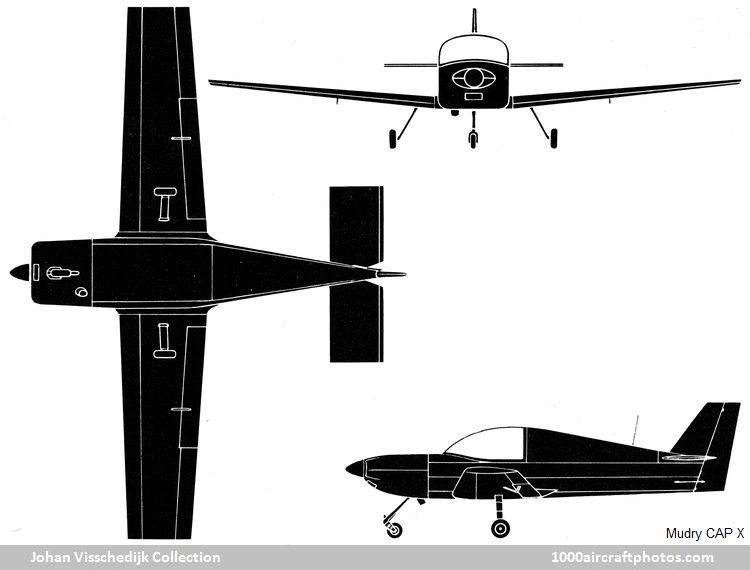01/15/2019. Remarks by Walter van Tilborg: "The CAP X was an entirely new design of Avions Mudry & Cie, Bernay, France, and intended as a simple and economic to operate light two-seat sport and training aircraft. Construction of the CAP X was mainly wood with composite material parts and the type was developed to the same official specification that also resulted in the Robin ATL. The CAP X design had no relationship with the earlier CAP 10, which was an aerobatic development of the Piel Emeraude.
The prototype (F-WZCJ c/n 001), initially referred to as just CAP X, had a forward-sliding canopy. Powered by an 80 hp Mudry-Buchaux MB4-80 engine it was first flown on September 10, 1982. Re-engined with an 115 hp Lycoming O-235 and re-designated CAP X Super (or CAP XS), it was flown in the new form on May 5, 1983.
First flown nearly three years later, on June 13, 1985, the second prototype (F-WZCG c/n 002) was also initially known as a CAP X, but also referred to as a pre-production aircraft. It featured a modified airfoil wing, modified construction technique, a taller upwards-hinging cockpit canopy, and other minor refinements. Fitted with an 108 hp Lycoming O-235 engine, it was suited for limited aerobatics. Shortly afterwards, production of the CAP X was postponed indefinitely.
Resuscitating the program in 1989, Mudry retrospectively re-designated the first two prototypes CAP Xl and X2. In response to interest expressed by three French civilian pilot training schools a tail wheel design was introduced, the CAP X4. The classical landing gear, a larger cabin, and an 112 hp Textron Lycoming O-235-N2A would meet the need for students to perform basic aerobatics in a demanding tail wheel aircraft before beginning airline training. The CAP X4 was not built, although the CAP X2 was adapted for ground demonstration of the CAP X4 aspects.
In February 1990, a CAP X3 would join the program, featuring a redesigned airframe with wing attachment points farther forward and 70% span ailerons. Depending on market response, this would be followed by the definitive CAP X4, which would have a fuselage widened and modified for increased visibility; and improved comfort and soundproofing. In the end, the CAP X3 was also not built.
The original prototype (CAP X → CAP XS → CAP X1) was later modified with a tail wheel landing gear and also received a new upwards-hinging cockpit canopy. Registered as F-PODB it became known as the Cabrix No. 1.
The CAP XB was a homebuilt project by Frenchman Lionel Blanc, also of Bernay, and with the test registration F-WRCT (c/n 01), it first flew on February 17, 1992. The aircraft was powered by an 100 hp Continental O-200-A engine and featured a tail wheel type landing gear. After receiving a CofA, the aircraft was reregistered F-PRCT on September 7, 1994. Recently also a CAP X2 was homebuilt, constructed by Laurent Chartier, it was registered F-PLDA on October 27, 2017."

